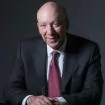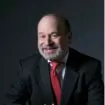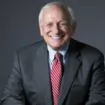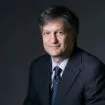On April 7, in Arkansas Teacher Retirement System, et al. v. Goldman Sachs Group, Inc.,1 a Second Circuit panel declined to narrow the scope of the inflation-maintenance theory of securities fraud and split 2-1 in affirming the District Court's certification of a shareholder class under Rule 23 of the Federal Rules of Civil Procedure on the question of whether Goldman had rebutted the Basic "fraud on the market" presumption of reliance.
Litigation Background
The underlying action dates back to 2011, and this was the second time the case came before the Second Circuit pursuant to Rule 23(f), which allows a court of appeals to permit an appeal of a class certification order. The gravamen of the plaintiffs' complaint is that Goldman's general public statements that it had extensive procedures designed to identify and address conflicts of interest and that it was dedicated to complying with the law were misleading, in violation of § 10(b) of the Securities Exchange Act of 1934 and Rule 10b-5 promulgated thereunder. The plaintiffs claimed that while Goldman publicly marketed subprime mortgage collateralized debt obligation (CDO) transactions as desirable investments, Goldman had privately allowed hedge funds, betting against the success of the CDOs, to play an active role in selecting the underlying mortgages at the expense of other CDO investors.2 Relying on the inflation-maintenance theory of securities fraud, the plaintiffs argued that Goldman's public statements concerning conflicts of interest artificially maintained an inflated stock price and that the eventual revelations in a Securities and Exchange Commission (SEC) enforcement action served as corrective disclosures that caused the market to devalue Goldman shares.
The District Court initially certified the shareholder class back in 2015. On Goldman's first appeal, the Court of Appeals vacated the class certification decision,3 holding that the District Court had failed to apply the correct evidentiary standard in determining whether Goldman had successfully rebutted the presumption of reliance under Basic v. Levinson and had shown that the decline in Goldman's share price was due to something other than its alleged misstatements.4 On remand, the District Court reconsidered Goldman's evidence but ultimately recertified the class. Goldman once again appealed the certification decision and argued two grounds for reversal: (1) the District Court misapplied the inflation-maintenance theory, and (2) the District Court abused its discretion by rejecting Goldman's Basic rebuttal evidence. The appeal generated significant attention in the form of amicus curiae briefs on behalf of both parties, highlighting that these questions are highly relevant for both plaintiffs and defendants in securities litigation.
The Second Circuit's Opinion
The Court of Appeals first considered Goldman's inflation-maintenance theory argument. The inflation-maintenance theory, also known as the price-maintenance theory, posits that misstatements can affect the market price — or have a "price impact" — by artificially maintaining an already inflated share price.5 In its appeal, Goldman asked the Court of Appeals to narrow the application of the theory to (1) misstatements that artificially maintain a "fraud-induced inflation" of the share price and (2) misstatements that are "unduly optimistic" about "specific, material financial or operational information" or that "falsely convey that the company has met market expectations about a specific, material financial metric, product, or event" rather than general statements concerning ongoing business principles such as conflicts management.
The full panel declined to accept Goldman's attempt to narrow the theory. First, relying on the circuit's original inflation-maintenance theory case, In re Vivendi, S.A. Sec. Litig., the court rejected the argument that the inflation-maintenance theory can apply only to fraudulently induced inflations of share price. In his dissenting opinion, Judge Richard C. Sullivan agreed that "the district court did not misapply the inflation-maintenance theory of price impact. Whatever the flaws of that theory, it is clearly the law of this circuit and not for this panel to revisit."
The court likewise did not accept Goldman's argument that general statements are incapable of maintaining inflation of the share price and thus are incapable of having a price impact. The court viewed Goldman's proposed revision as implementing a de facto materiality test at the class certification stage and concluded that these kinds of materiality arguments were not relevant to the Rule 23 class certification requirements and were more appropriately raised on a motion to dismiss or at summary judgment.
While the court declined Goldman's invitation to narrow the scope of the inflation-maintenance theory, the panel did split 2-1 on the District Court's finding that Goldman had failed to rebut the Basic presumption and the subsequent certification of the shareholder class.
A putative plaintiff class can invoke the Basic presumption if three requirements are met: "the defendants' misstatements were publicly known, their shares traded in an efficient market, and the plaintiffs purchased their shares at the market price after the misstatements were made but before the truth was revealed." On that basis, a plaintiff can satisfy Rule 23's requirement that common questions of law or fact predominate over individual questions pertaining to certain class members. A defendant can then rebut the presumption by offering evidence that the entire share price decline was due to something other than its misstatements.
Goldman conceded that the plaintiffs could invoke the Basic presumption but attempted to rebut the presumption, citing to 36 news reports that predated the corrective disclosures and referenced Goldman's conflicts issues but were not accompanied by a drop in share price. Goldman contended that the market's nonreaction to these reports indicated that the market was indifferent to alleged misstatements concerning Goldman's conflict controls, and therefore the post-corrective disclosure drop in share price was not attributable to those misstatements but rather to the news of the SEC's enforcement activity. Judge Richard C. Wesley, writing for himself and Judge Denny Chin, while acknowledging that the District Court's analysis could have gone the other way, declined to find the lower court abused its discretion in concluding that "the 'hard evidence' first revealed in the corrective disclosure moved the market in a way that the news reports did not."
Judge Sullivan dissented. He concluded that Goldman had successfully rebutted the Basic presumption by offering "persuasive and uncontradicted evidence" that Goldman's share price was unaffected by the 36 news reports that disclosed Goldman's conflicts of interest prior to the corrective disclosures. This evidence of the market's nonreaction to Goldman's conflicts of interest disclosures "severed the link between the alleged misrepresentation and the price paid by the plaintiff" and successfully rebutted the Basic presumption that shareholders relied on Goldman's misstatements. And last, despite his agreement with the majority's inflation-maintenance theory analysis, Judge Sullivan suggested that appellate courts should not shy away from considering whether the misstatements at issue are too generic for any reasonable investor to consider them significant. In Judge Sullivan's view, "once a defendant has challenged the Basic presumption and put forth evidence demonstrating that the misrepresentation did not affect share price, the reviewing court is free to consider the alleged misrepresentations in order to assess their impact on price. The mere fact that such an inquiry 'resembles' an assessment of materiality does not make it improper."
Looking Ahead
The Court of Appeals' decision is unlikely to put these issues to rest. Goldman has indicated its intent to seek en banc review of the panel's decision. Furthermore, Judge Sullivan's dissenting opinion raises the question of whether at the class certification stage, courts should apply greater scrutiny of alleged misstatements and their price impact.
Footnotes
1 No. 18-3667, 2020 WL 1682772 (2d Cir. Apr. 7, 2020). Circuit judges Richard C. Wesley, Denny Chin and Richard J. Sullivan sat for the panel, with Judge Wesley authoring the majority opinion and Judge Sullivan dissenting.
2 Id. at *2. In 2010, Goldman reached a $550 million settlement with the Securities and Exchange Commission concerning its alleged failure to disclose the role that a hedge fund client played in the portfolio selection of one particular transaction (the "Abacus" transaction). Id.
3 Ark. Teachers Ret. Sys. v. Goldman Sachs Grp., Inc., 879 F.3d 474, 478 (2d Cir. 2018).
4 See Basic v. Levinson, 485 U.S. 224 (1988).
5 See In re Vivendi, S.A. Sec. Litig., 838 F.3d 223, 257 (2d Cir. 2016).
The content of this article is intended to provide a general guide to the subject matter. Specialist advice should be sought about your specific circumstances.






